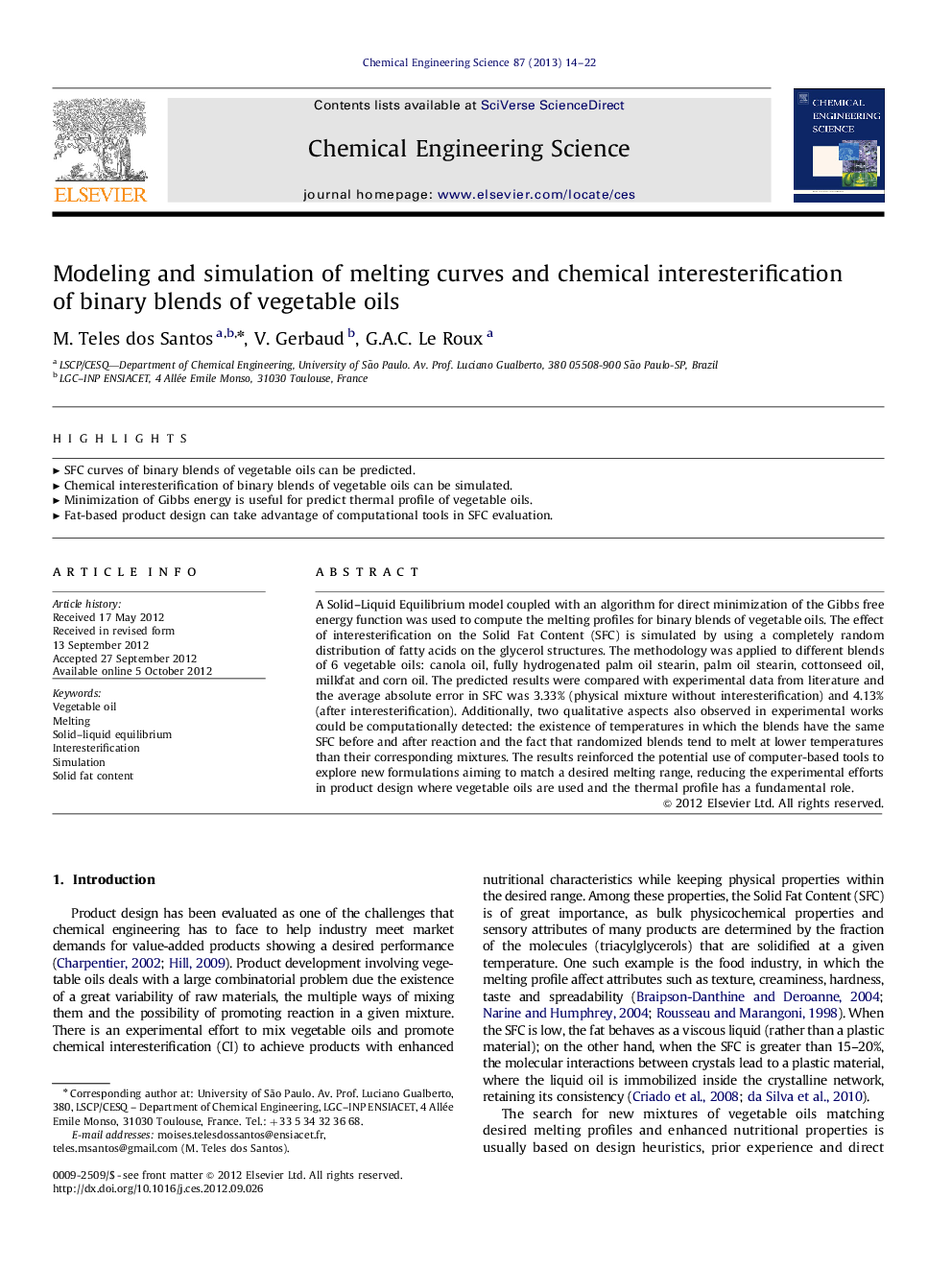| Article ID | Journal | Published Year | Pages | File Type |
|---|---|---|---|---|
| 155401 | Chemical Engineering Science | 2013 | 9 Pages |
A Solid–Liquid Equilibrium model coupled with an algorithm for direct minimization of the Gibbs free energy function was used to compute the melting profiles for binary blends of vegetable oils. The effect of interesterification on the Solid Fat Content (SFC) is simulated by using a completely random distribution of fatty acids on the glycerol structures. The methodology was applied to different blends of 6 vegetable oils: canola oil, fully hydrogenated palm oil stearin, palm oil stearin, cottonseed oil, milkfat and corn oil. The predicted results were compared with experimental data from literature and the average absolute error in SFC was 3.33% (physical mixture without interesterification) and 4.13% (after interesterification). Additionally, two qualitative aspects also observed in experimental works could be computationally detected: the existence of temperatures in which the blends have the same SFC before and after reaction and the fact that randomized blends tend to melt at lower temperatures than their corresponding mixtures. The results reinforced the potential use of computer-based tools to explore new formulations aiming to match a desired melting range, reducing the experimental efforts in product design where vegetable oils are used and the thermal profile has a fundamental role.
► SFC curves of binary blends of vegetable oils can be predicted. ► Chemical interesterification of binary blends of vegetable oils can be simulated. ► Minimization of Gibbs energy is useful for predict thermal profile of vegetable oils. ► Fat-based product design can take advantage of computational tools in SFC evaluation.
